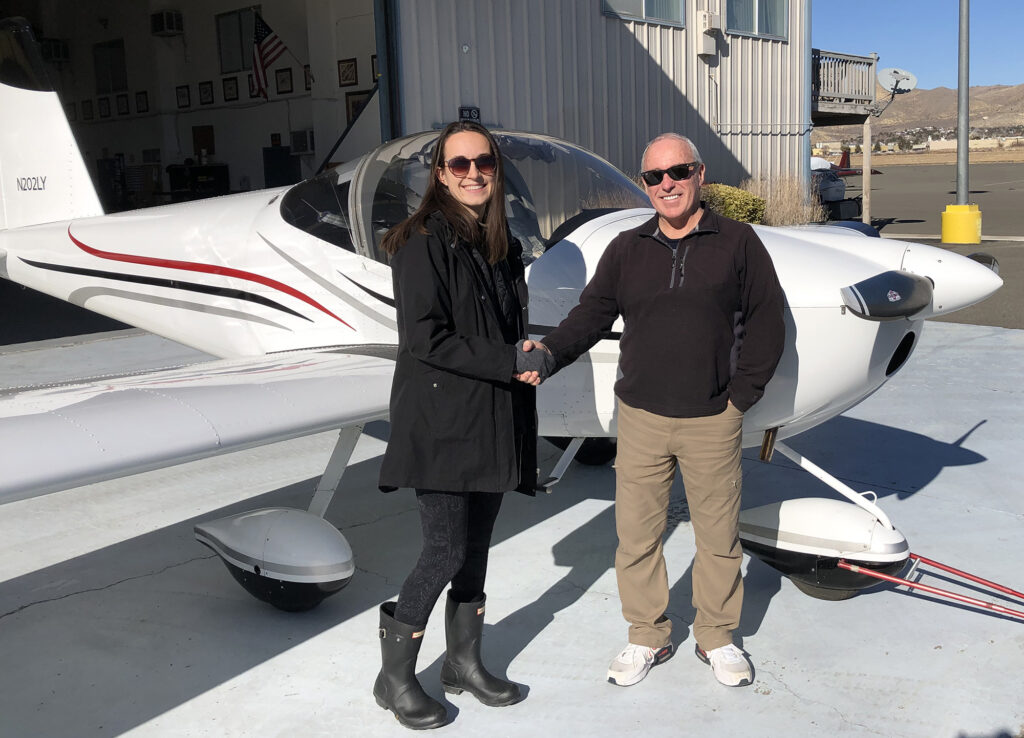
BRIEF: Pilot training, student/owner in ELSA RV-12. Successful Sport Pilot checkride. Flight planning. 900 mile cross country after 2 months of training.
STORY:
First, I’ll start with the back story leading up to this flight. In the Fall of 2024, Scott from Texas bought an RV-12 based out of Portland, OR and purchased a hangar in Amarillo, TX. He didn’t even have any flight training at this point! It’s always a little bit of a risk buying a hangar and an airplane before you fly at all because sometimes people are surprised to find out that they actually don’t like flying. Luckily, that wasn’t the case with Scott; he loved it right off the bat. He searched around for flight schools all over the US, trying to figure out the best way to get his new-to-him airplane from Oregon all the way to his home in Amarillo and come up with a plan for learning to fly it.
After calling flight schools, getting quotes on ferrying the airplane, and having a couple of different plans fall through, he landed on a decision after a phone call with Paul Hamilton, owner of FBO Sport Aviation Center. Carson City is along the way from Oregon to Texas, so this was probably the most efficient way to get training and get the airplane part way to Texas. They made a plan that Paul would meet Scott in Portland where they would go on a couple of test flights before making the ~400 nautical mile (nm) trip back to Carson City (KCXP) together. Paul had plenty of experience in the RV-12 at that time, so he was mainly concerned with making sure the airplane was airworthy and in good shape before he committed to the trip. It had been less than a week between the phone call with Paul and getting the airplane to Carson City where I would teach him to fly it. At Sport Aviation Center, we have 2 full-time instructors, 2 LSA Slings, and a Sport Pilot DPE (Paul Hamilton) all ready to get the job done, so we’re a popular choice for many people from all over the States who are looking for the best way to get their training done.
It was early November when they got Scott’s airplane to the Carson City Airport and we started training right away. Unlike Paul, I did not have any experience in the RV-12 at all. I went on a familiarity flight with Paul and I was ready to train Scott that same day. When you get your pilot’s certificate, you not only learn how to fly the aircraft you’re training in, but you also learn skills that can translate to other aircraft of the same category and class. The RV-12 and Sling 2 are pretty similar in the way they fly, so it was a pretty straightforward transition. We flew almost every day for about 2 months before he was ready for his checkride. He also completed our ground school course and the written exam during his stay here. It’s recommended to get those requirements done before coming out here for flight training, but it worked out well for him to study in his hotel room after our flights.
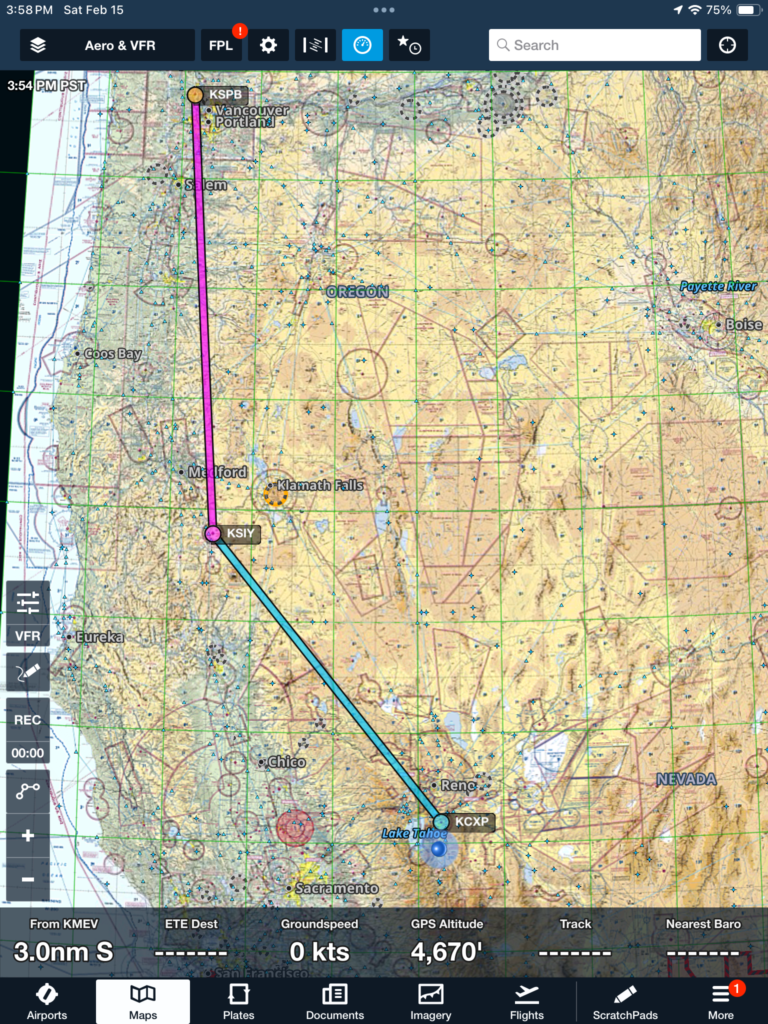
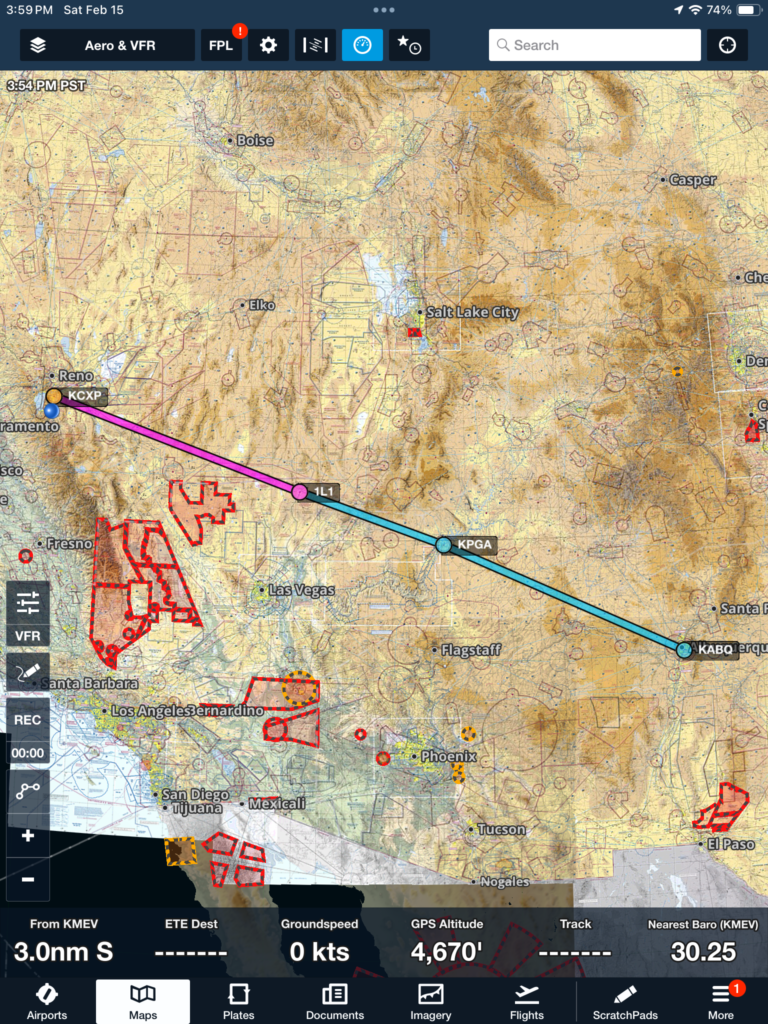

We typically see that however old you are is how many hours it will take. Scott is 64 years old and it took him about 60 hours to complete his training and checkride. Sport pilot requires a minimum of 20 hours, so he had triple the minimum! And that’s a good thing; the more training the better. Everyone wants to know how many hours it will take them to complete their training. It’s different for everyone; we’ve seen anywhere from 30 to 120 hours. Some factors it depends on is experience, availability, age, and money. Our standards are no different than what’s expected for private pilots. Just because you legally can get your certificate in 20 hours, doesn’t mean you can actually develop the skills necessary to pass a checkride or become a safe pilot. It takes a lot of practice and repetition to build all the proficiency, situational awareness, ability to quickly divert attention from one thing to another, and so much more. Keep in mind that although a new pilot is inexperienced, they are sometimes safer than more experienced pilots because all that intense training to the high checkride standards is fresh in their minds. New pilots also aren’t commonly victims of complacency because the nerves of being officially on their own for the first time keeps them on their toes.
All of this is leading up to say that Scott was more than ready for his big cross-country back home. The total distance from KCXP to River Falls (H81) was 916nm! Naturally, he was a little nervous to make this trip on his own, as anyone would be right after getting their certificate. So, after lots of careful planning and waiting for the perfect weather day, I tagged along with him as a safety pilot, instructor, and friend. One thing I love about my job is that I get to build relationships with so many different people. I have friends from all over the US now! Okay, back to the story.
We planned to take off at 7:30 am, right after sunrise, and head to Lincoln County (1L1) in Panaca, Nevada, and then Page, Arizona (KPGA) for fuel stops. Then we would fly to Albuquerque, New Mexico (KABQ) for a full stop. 677 total nautical miles. Since we wouldn’t be able to do the entire 900 miles in one day before the sun went down, I would hop on an airliner to Reno from Albuquerque and Scott would fly with his brother-in-law, private pilot, the rest of the way home (239nm) a few days later.
A part of our flight planning included a “test” flight from Carson to Tonopah (KTPH) which was 142nm. KTPH was one of our potential diversion airports since it was along the way to KABQ, so it was nice to see a preview of what the beginning of our flight would look like. We wanted to calculate exactly how long it would take us to meet at Carson, preflight, start-up, taxi, run up, fly to KTPH, get fuel, and then take off again. We wrote down all the times along with different fuel burns calculated on the ground and while flying. We wrote down notes on our altitude, airspeed, winds aloft, and anything else that would help us get an accurate reading on how much time and fuel it would take to complete this trip. The RV-12 only holds about 20 gallons of fuel, so planning out when and where to fuel up and how long it would actually take us to do that was critical. We ended up burning about 6 gallons of fuel on the leg from Carson to Tonopah and it only took us a little over an hour since we had a good tailwind and averaged about 130knots over the ground! The RV12 burns about 5 to 5.5 gallons per hour during cruise, so all the numbers agreed with each other nicely. Sometimes fuel gauges don’t read accurately during the whole flight. We double-checked the performance ourselves rather than just relying on the gauges since one of the most common reasons for engine out is fuel starvation. One of the interesting things about this flight was that we only took 10 minutes longer on the flight back to Carson in the 25-30 knot headwind. I thought it would take us a bit longer than that.
And with that, we were ready to go on the next best day. Another big concern with a long cross country like this is changing weather, so we made sure to pick the best day we could to avoid any hiccups.
The flight to Albuquerque was fun and uneventful. We climbed up to 11,500′ and headed to Lincoln County Airport (1L1). We contacted ATC and got on flight following for almost the entire flight. There was one active MOA on the way to 1L1 that required contact with ATC before flying into it. We saw one military aircraft doing some quick and abrupt maneuvers, but other than that it was pretty quiet. As you probably know, a Sport Pilot can only fly up to 10,000′ MSL or 2,000′ AGL, whichever is higher, but we could climb up above that because I hold a Private Pilot certificate. This leg of the trip went by really fast but it was the longest leg with very few airports in between. Flying 264nm over the vast Nevada desert was less boring than I thought! There were lots of tiny little towns and bits of civilization, and plenty of flat spots, old roads, and dry lake beds along the way, which all would’ve made decent engine-out spots. My main concern with this trip was having an engine out in the middle of nowhere with no sign of people nearby, but as we flew along I realized that wasn’t a big issue. We stayed focused and talked about what we would do and where we would go if we did happen to have an engine out. It’s always good to be prepared and have a plan in mind. The fuel stop only took 30 minutes. We planned an hour per fuel stop just in case it didn’t go smoothly, but thankfully, both stops were quick and easy.
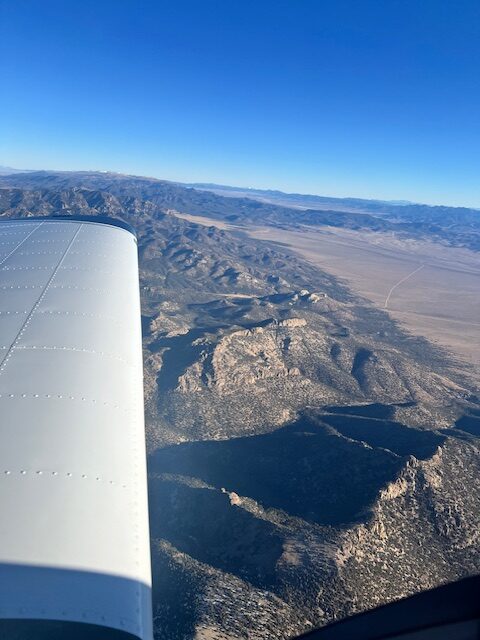
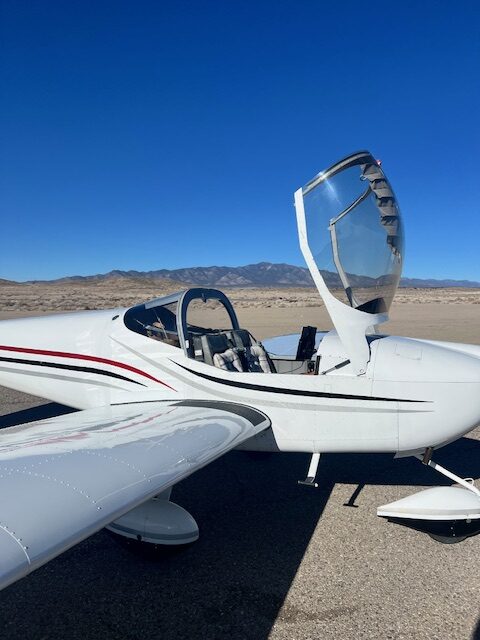
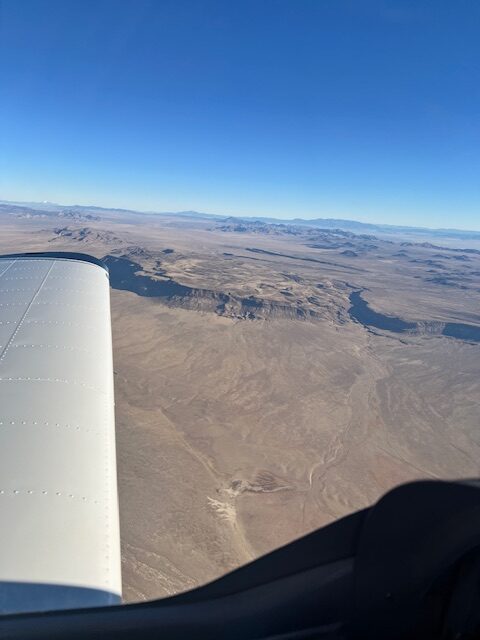
Somewhere over the middle of Nevada in the first and third picture. RV-12 at Lincoln County Airport in the middle.
Once we got to Utah, the scenery got a lot more interesting. My favorite part was flying directly over Zion National Park. The pictures don’t do it justice, but there were lots of tall, jagged cliffs and canyons with big plateaus on top. It was especially beautiful looking back at it with the sun shining on the east side of the rock face. Next up was Page Airport which sits right next to Lake Powell at the border of Utah and Arizona. This was another exciting spot. A giant, meandering, deep blue lake surrounded by nothing but red desert. Another 30-minute stop and we were ready for the last leg to KABQ.
This part of the flight is where we lost flight following. We were just out of range to get the flight following service, so we went about 50 miles before we could contact the next controlling agency. No big deal. When you can’t get flight following, you can just monitor the nearby airports to hear about any traffic in the area or listen to your next expected ATC frequency. About 20 miles or so from KABQ, they put us on a long right base leg to runway 21. Before this flight, we spent time training at Reno, a Class C airport like Albuquerque. The sport pilot curriculum doesn’t require towered airport training, but Scott wanted to get that done as well since he was planning to fly in and out of a Class C and D airport in Texas.
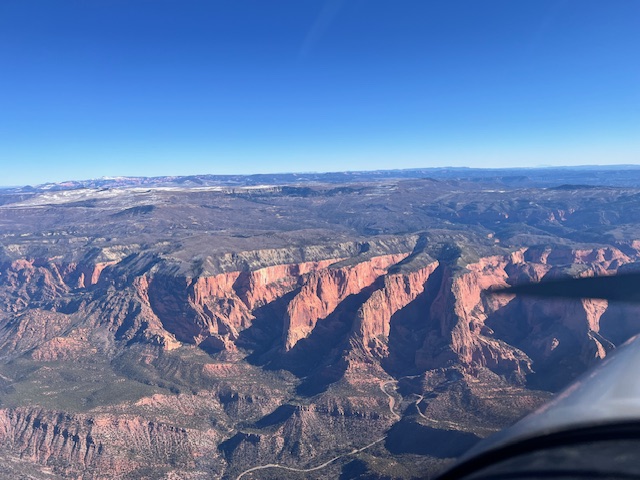
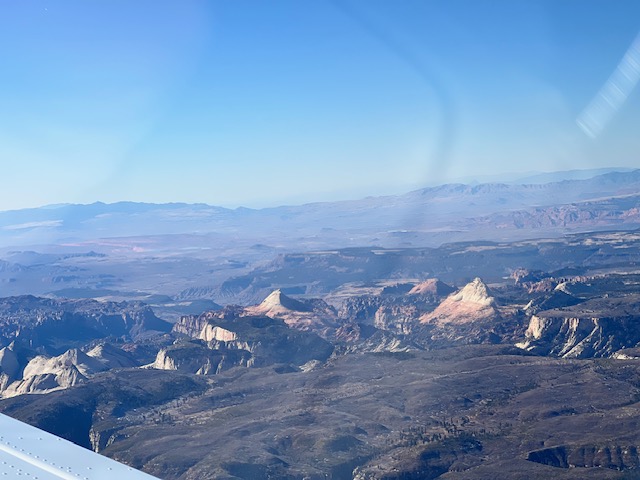
Mt. Zion National Park in pictures above. Left picture is looking at it from the west and right picture is looking back at it from the east after crossing over.
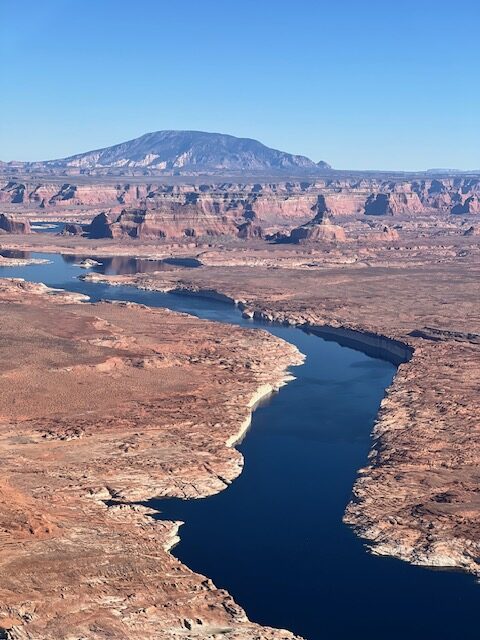

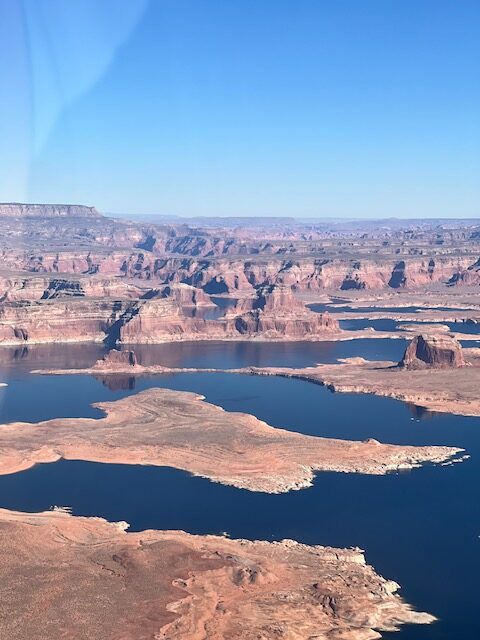
Lake Powell and airport in Page, Arizona in pictures above.
Exactly 7 flight hours later, we finally made it to our destination. We said our goodbyes and I got a ride from the FBO Cutter Aviation to the terminal. I got home to Reno around 11 pm! I was exhausted after that, but the adventure was worth it. 4 states in one day with an hour of daylight to spare.
